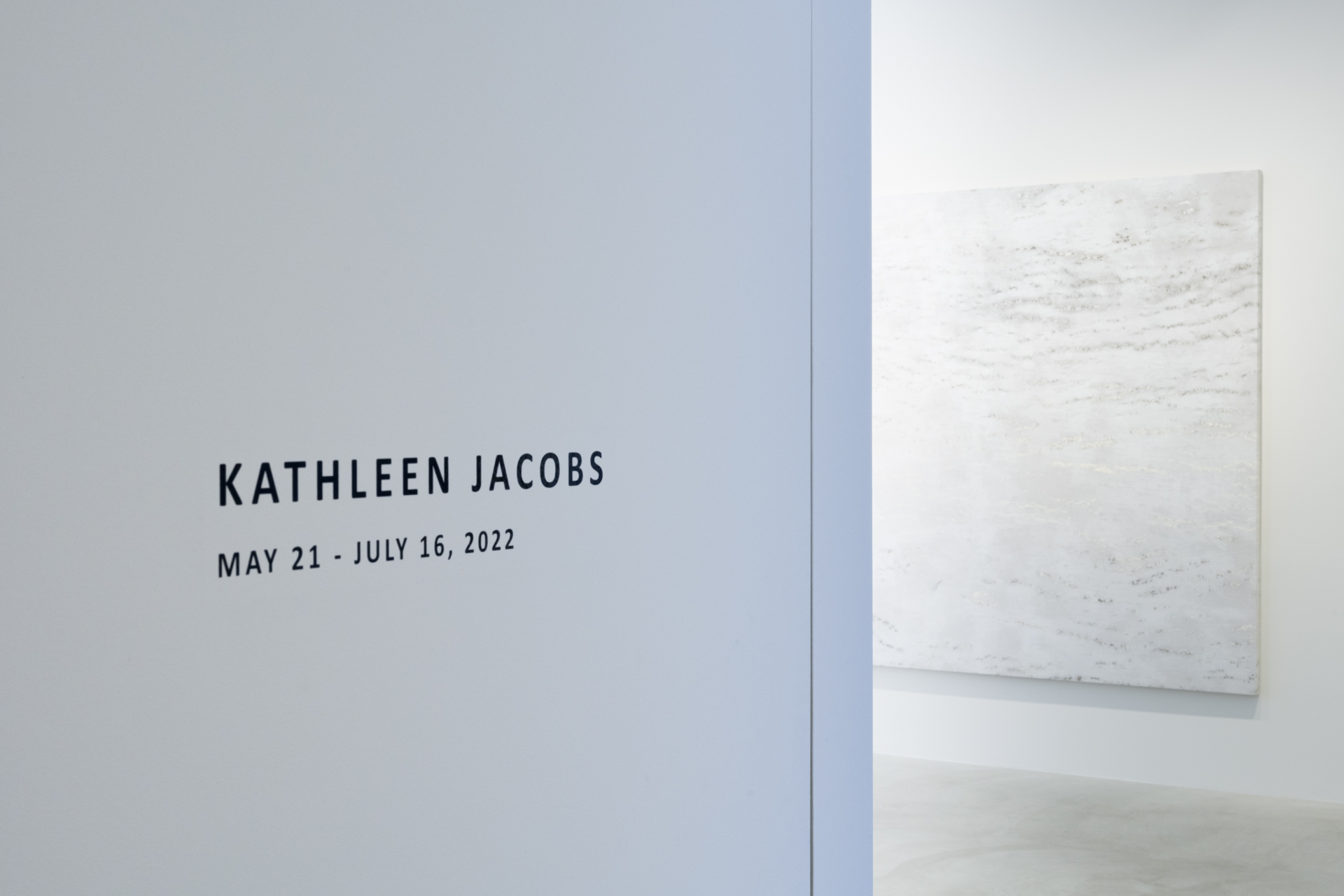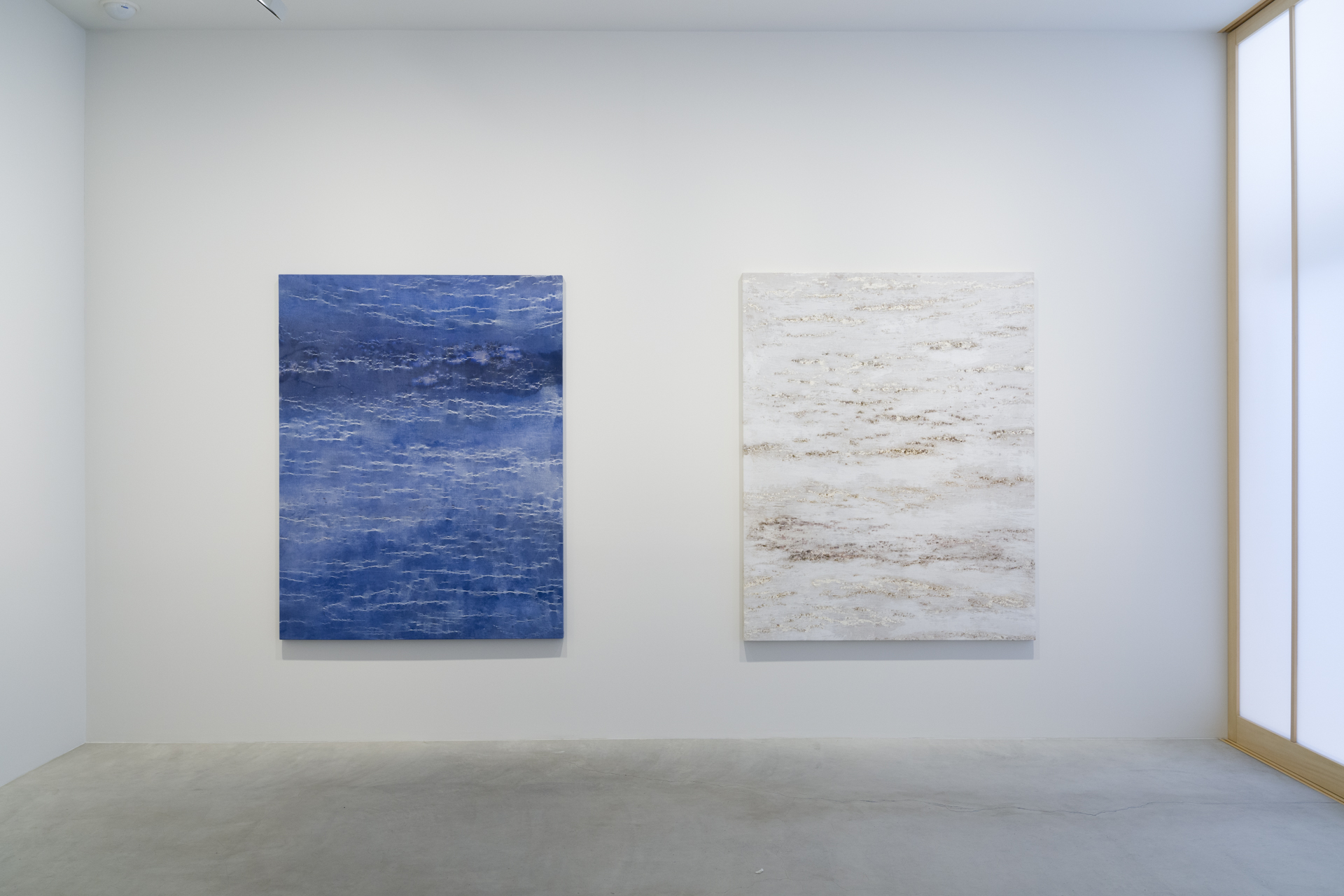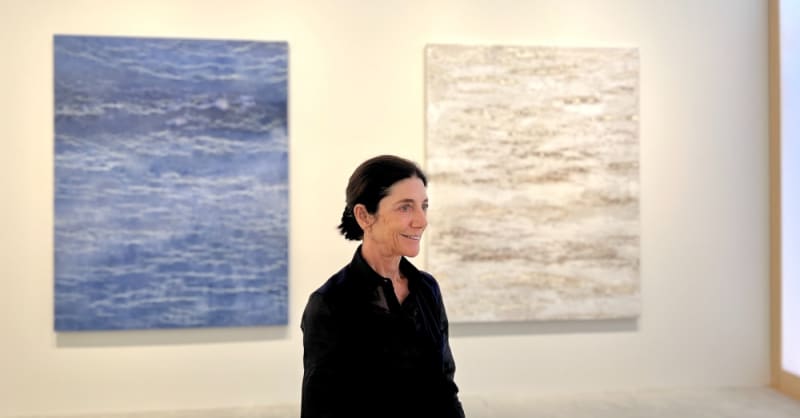
American artist Kathleen Jacobs gained recognition in the United States and Europe for her abstract paintings and ceramics, which are created by wrapping cloth around trees and transferring the bark lines onto them. Her first solo exhibition in Asia is held simultaneously at two galleries, Fergus McCaffrey Tokyo (Omotesando, until July 16) and CADAN Yurakucho (Yurakucho, until June 5). We asked the artist, who studied traditional painting and calligraphy in China and whose creative activities are deeply rooted in this experience, about the story behind developing this unique technique and her creative process.

Influence of Chinese and Japanese art and culture
──This is the first time I have had the opportunity to see your works. Although these minimalist abstract paintings are composed of only a few colors and lines, they have landscape-like spatiality, and some look like the blue ocean or monotone snowy landscapes. The complex textures of paint and faded colors created by placing the canvas outdoors are also fascinating and reminded me of the pottery "landscape,” which appears when the piece is fired. This is your first solo exhibition in Japan and Asia; how do you feel about it?
It is an incredible honor and a lifelong dream. I am influenced by my time in China, but also by Japan, where you can see the preservation of the beautiful aesthetic. It is still alive everywhere today and has influenced my life and work.
I was profoundly influenced by the famous Chinese painter and my former father-in-law Huang Yongyu (born in 1924). I also learned woodblock printing from Japanese-American artist Hiroki Morinoue (born in 1947), which inspired my technique of transferring the patterns of the wood. Many potter friends encouraged me to work with clay and porcelain. One of them is Takashi Nakazato (born in 1937), an artist from the famous Nakazato family in Karatsu, who I’ve met in Colorado, United States. He travels around the world teaching pottery and has pieces in museums all around the world. But he is also a very lovely man. He made a big beautiful bowl and said to me, “Ok, now you will paint it and finish it!”. I was horrified and didn’t know what to do [laughs]! The embrace of the unintentional changes seen in pottery has definitely influenced my paintings. Moreover, the activities of the Japanese "Gutai Art Association," which pursues original techniques without imitation, overlap with my motto and resonate with me. I’ve been inspired by both traditional Asian art and contemporary artists, and I am deeply honored to be able to present my work here.

